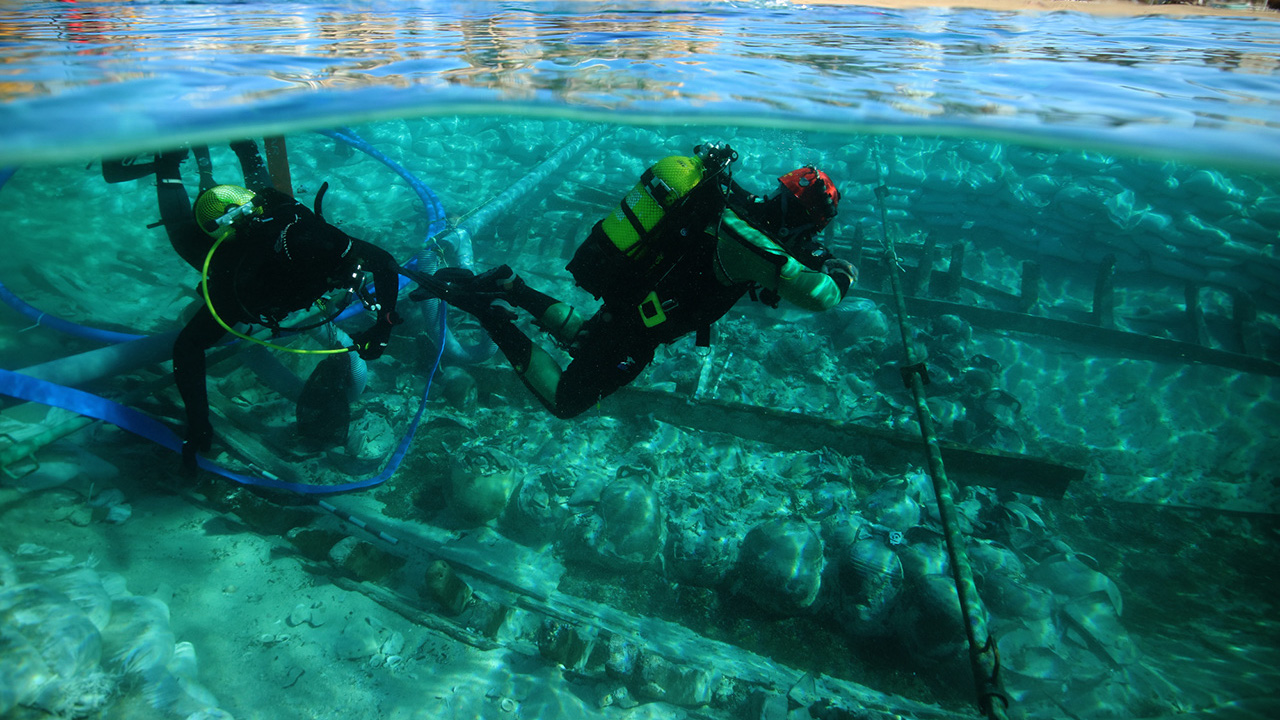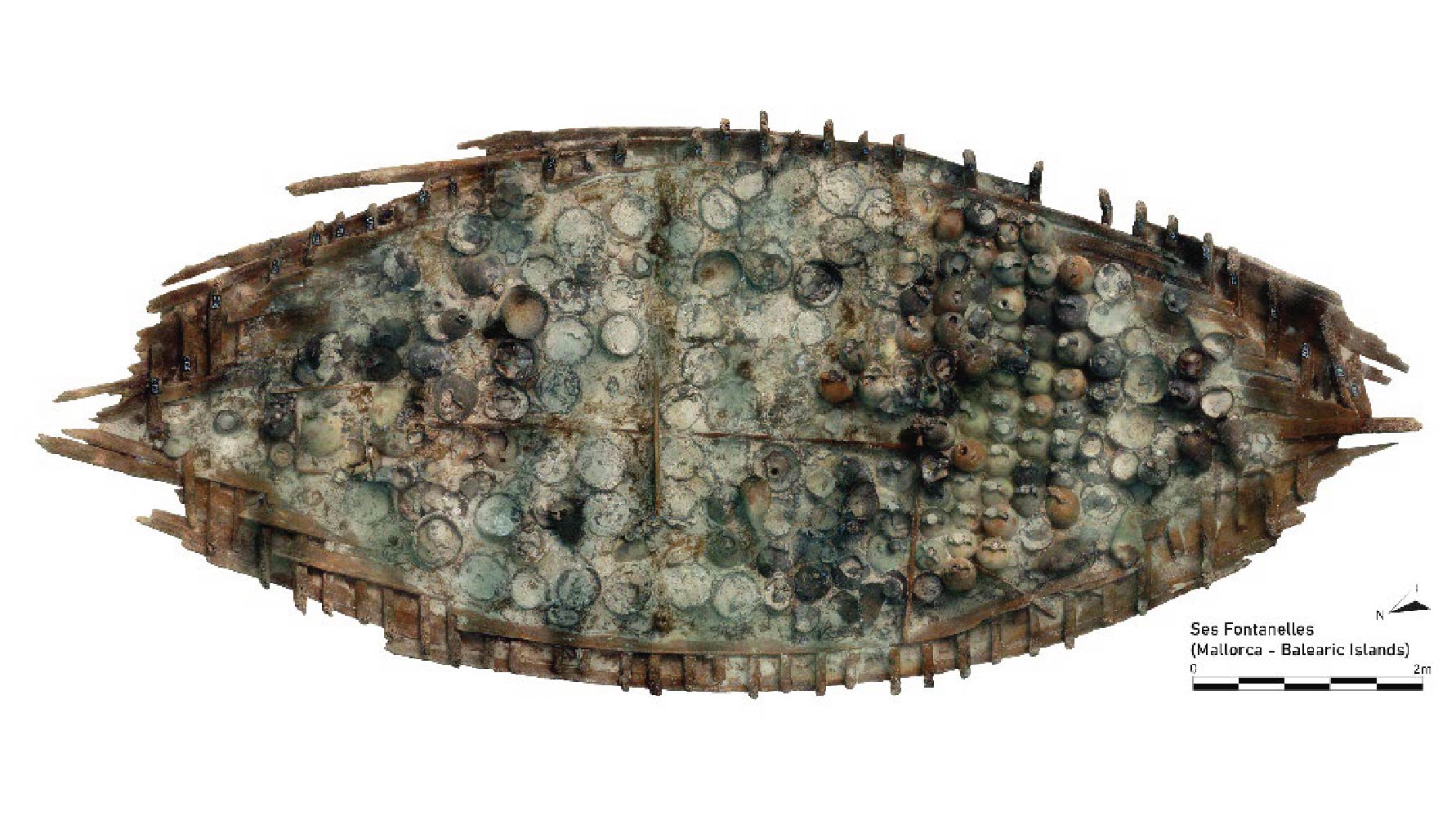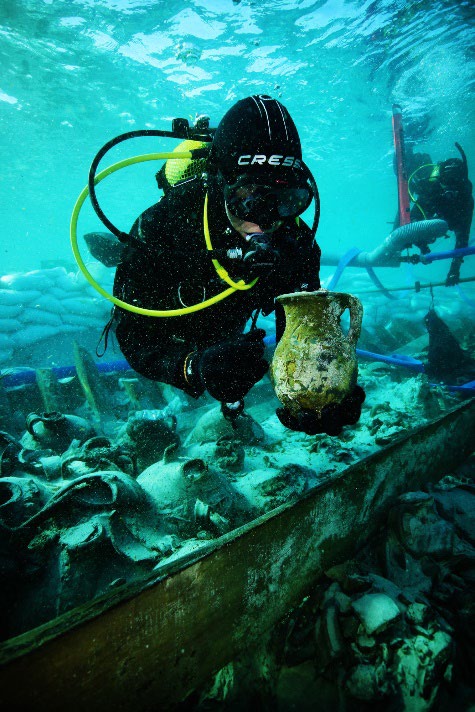1,700-year-old Roman shipwreck was stuffed to the gills with fish sauce when it sank
The wreck near a beach on Mallorca gives a snapshot of sea trade in late Roman times.

A Roman-era shipwreck on the Spanish Mediterranean island of Mallorca was carrying a cargo of highly prized fish sauce when it sank around 1,700 years ago, a new study finds.
The Ses Fontanelles wreck lies in shallow water a few hundred feet from the beach near Les Meravelles, a resort town about 4 miles (6 kilometers) southeast of Palma, the capital of Mallorca (also spelled Majorca), where it was discovered after a storm in 2019.
Previous archaeological studies suggest the ship originated from or near the Spanish port of Cartagena — known as "Carthago Spartania" to the Romans — but sank because of unknown circumstances in the fourth century.
The latest study, published March 21 in the journal Archaeological and Anthropological Sciences, reports the most detailed analysis of the wreck yet. It reveals that many of the 300 sealed pottery jugs, or amphorae, in the ship's cargo contained fish sauce made from anchovies — a delicacy known in Latin as "liquamen."
It's unusual to find such a well-preserved wreck from this period, said study lead author Miguel Ángel Cau Ontiveros, director of the University of Barcelona's Institute of Archaeology and a research professor for ICREA, the Catalan Institution for Research and Advanced Studies.
"It is the only Late Roman shipwreck we know of so far from the area of Carthago Spartania [and] one of a few from the fourth century in the Mediterranean," he told Live Science.
Sign up for the Live Science daily newsletter now
Get the world’s most fascinating discoveries delivered straight to your inbox.

Roman wreck
Because the wreck lies in shallow water — an average of roughly 8 feet (2.4 m) below the surface — it was difficult to investigate amid the waves crashing near the shore. "It makes things very complicated when the sea is slightly moving," Cau said.
He thinks the remarkable preservation of the wreck and its many organic items — which would usually rot away quickly — was probably because the ship was immediately buried by sand and other sediments after it sank.
In addition to the amphorae, archaeologists found ropes, shoes, a wooden drill and organic "dunnage" or matting, made from vine shoots and grass, that was used to protect the ship's hull from the cargo, Cau said.

Many of the amphorae still contain residues of the substances they held; and the latest study used gas chromatography and other analytical methods to create a snapshot of Mediterranean trade in the fourth century, he said.
Many of the amphorae contained the remnants of fish sauce, while others held oil from plants — likely olives, wine, and perhaps olives preserved in vinegar. The distinctive amphorae for different products were labeled with painted inscriptions known as "tituli picti" in Latin, he said.
"The presence of so many painted inscriptions on the amphorae make us think that this was a common practice," Cau said.

Precious cargo
Previous studies found that many of the oil amphorae had seals stamped with a "Chrismon," or Christian monogram — similar to the Chi-Rho symbol of Constantine — which suggested they may have been marketed by a church authority, Cau said.
In another key discovery, the wooden "step" connecting the mast to the hull was found to contain a coin from Roman Siscia (in modern-day Croatia), in line with Roman rituals for blessing a ship. The coin was made during the reign of the Roman emperor Constantine the Great and fixed the earliest possible date of the ship as A.D. 320.
"This matches well with all the archaeological study of the materials recovered in the excavation that suggest that the boat sank around the mid-fourth century," Cau said.
The ancient Romans were big fans of fish sauce and enjoyed several different types. The most famous may be "garum," which seems to have been a luxury product made from fermented fish viscera (guts) and blood, but "liquamen" seems to have been made from whole fish.
The archaeological analysis found fragments of fish bones in some of the amphorae from the Ses Fontanelles wreck, which indicated the "liquaminis flos" they were labelled as holding — Latin for liquamen "flower," which may have meant "best liquamen" — was made mostly from anchovies but contained some sardines.
Tom Metcalfe is a freelance journalist and regular Live Science contributor who is based in London in the United Kingdom. Tom writes mainly about science, space, archaeology, the Earth and the oceans. He has also written for the BBC, NBC News, National Geographic, Scientific American, Air & Space, and many others.









